Understanding the Nutrition Label
How to read the back of food packages and beyond
If you have or your loved one has cystic fibrosis (CF), you're probably no stranger to a food label. But what parts of the label are most important for you to pay attention to and how can you ensure you're able to meet your unique energy and nutrient requirements? By breaking down the nutrition label and leaning on the expertise of your care team for guidance, you can make choices that work best for your individual needs.
Breaking down the nutrition facts
The nutrition facts table breaks down the composition of the packaged food, detailing key information like serving size, calories, and nutrients. Let’s dive in and expand on what each section means:
Nutrition facts by section: Serving information | Calories | Nutrients | Daily values
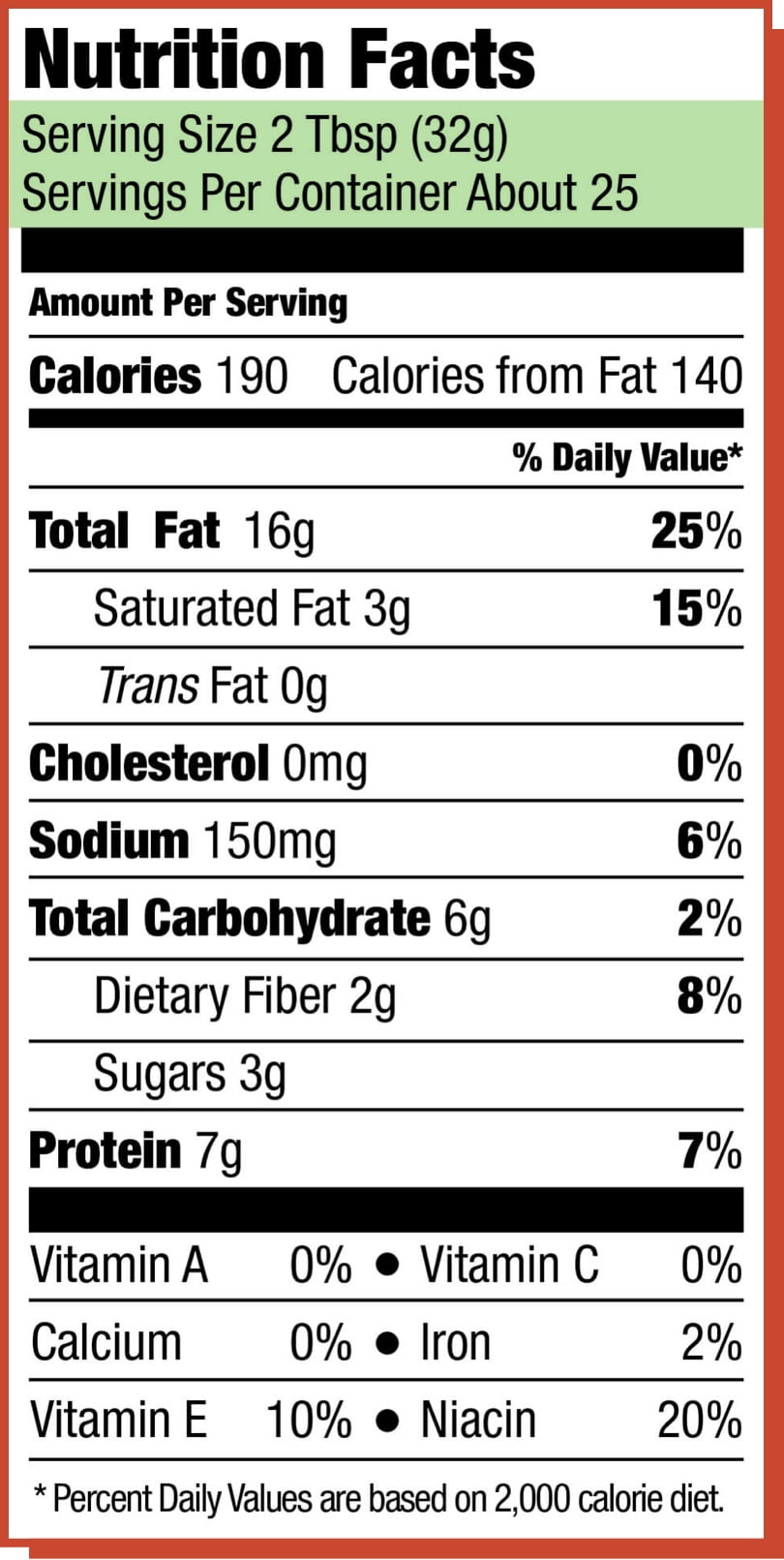
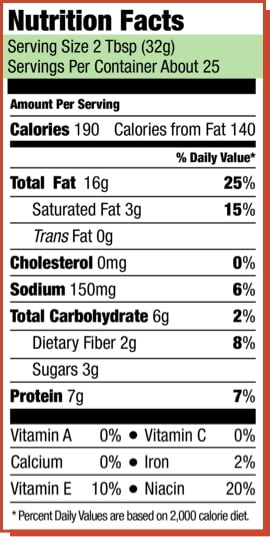
1. Serving information
Typically, one of the first things to look for on the label is the serving size and the number of servings in the package (servings per container). Serving sizes are given in familiar units (like tablespoons or pieces) followed by their metric amount (like grams or milliliters) to make it easier to compare similar foods. In this case, one serving of peanut butter is 2 tablespoons and there are 25 servings in the jar. The serving size reflects the typical amount that individuals usually eat or drink, however it does not suggest the amount they should eat or drink.
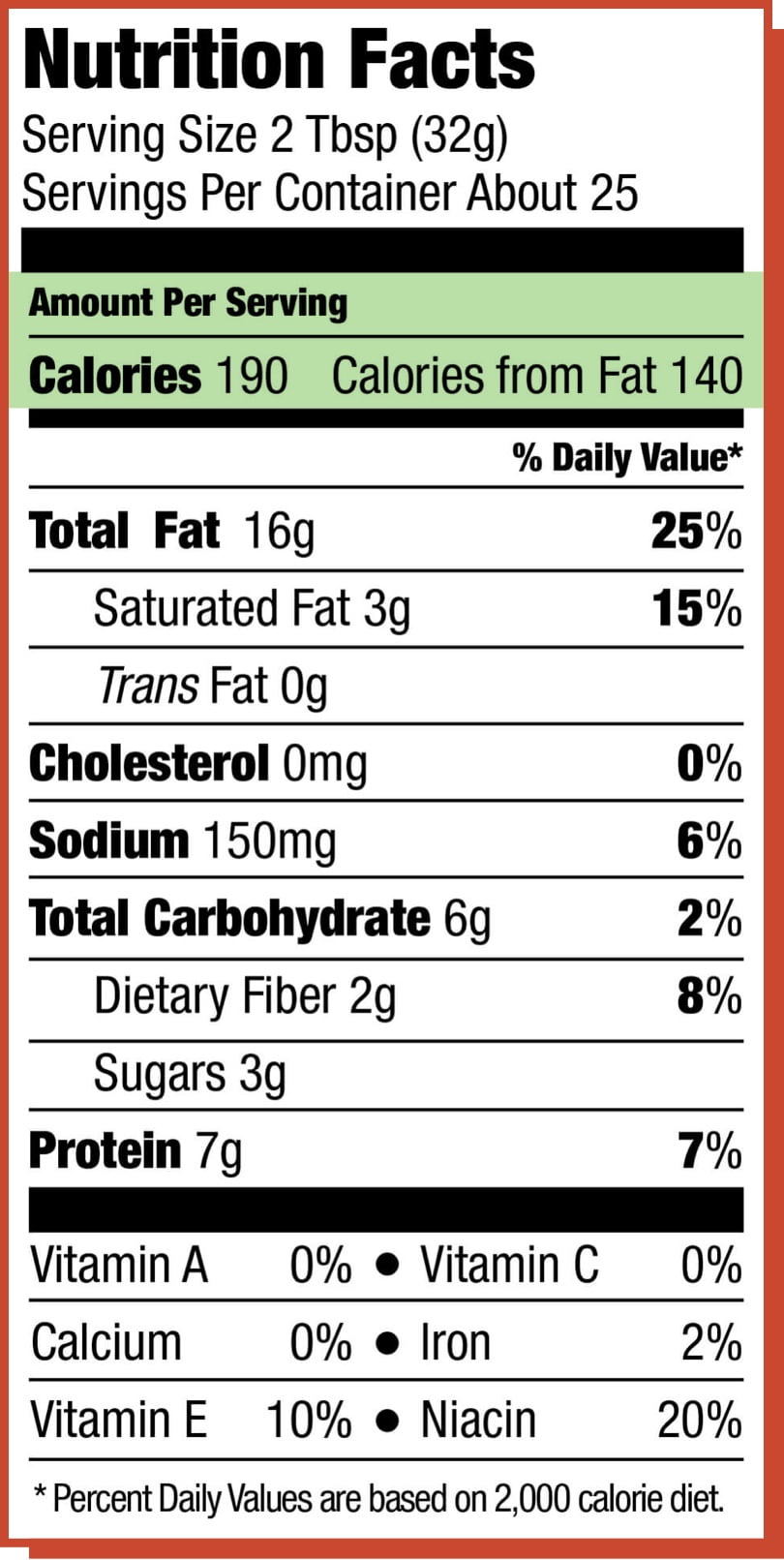
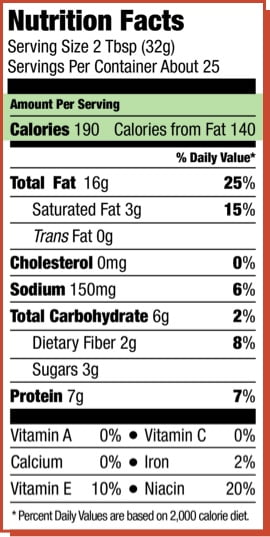
2. Calories
Another thing to pay attention to is the amount of calories, which is a measure of how much energy you get from a serving of food. If you stick to one serving of peanut butter, that’s 190 calories… and if you were to eat the entire jar, that’s around 4750 calories (190 calories x 25 servings per container).
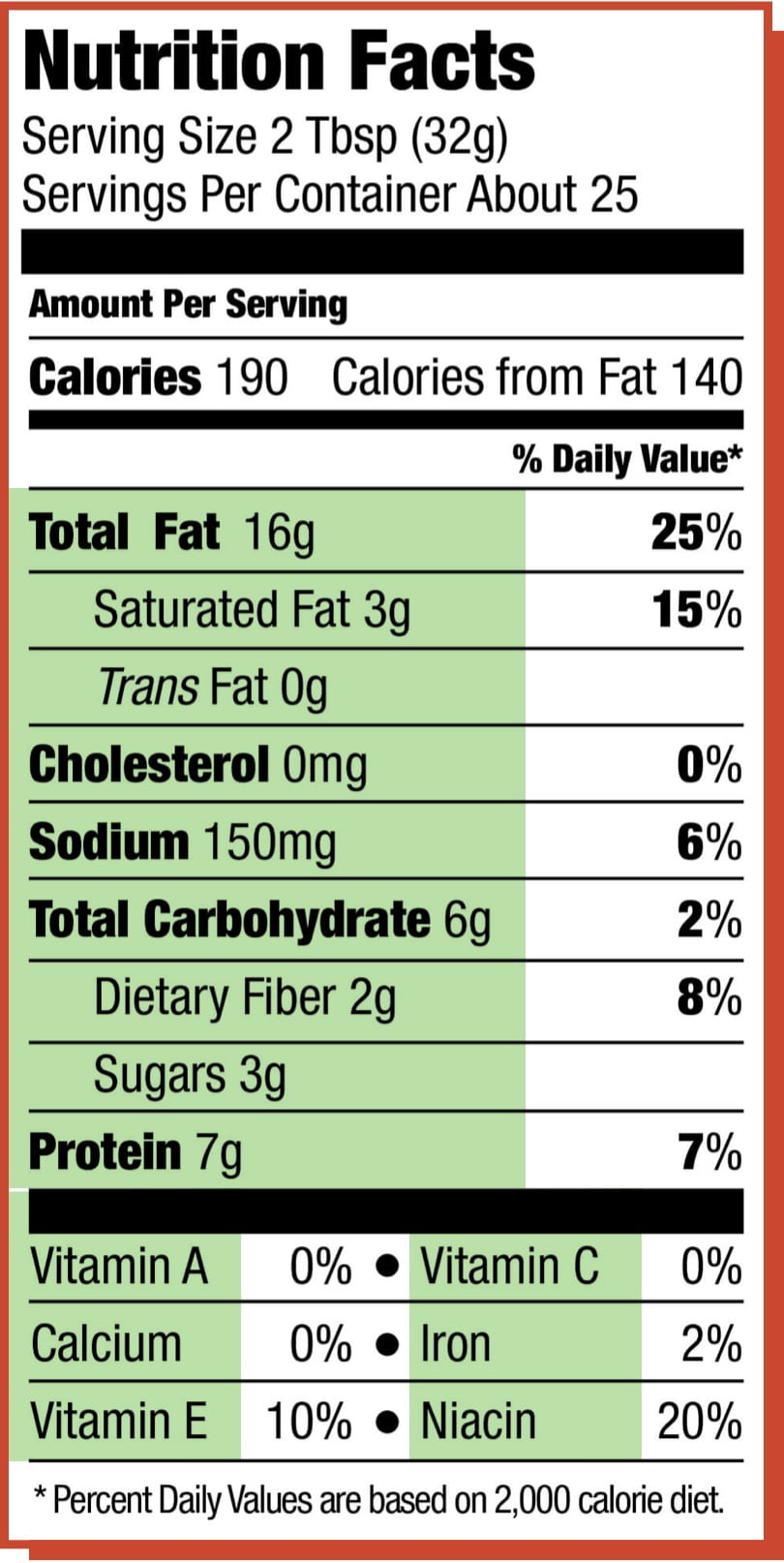
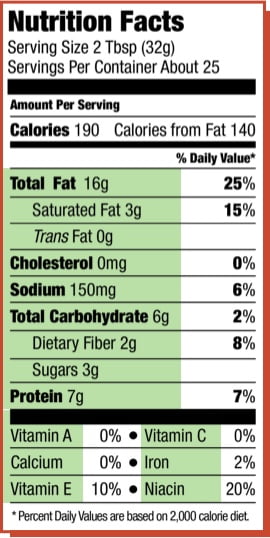
3. Nutrients
The nutrient section provides amounts of key nutrients that influence your health and it can be used as a support to your individual dietary needs. If you have or your loved one has CF, pay extra attention to the following values:
- Fats: Many people with CF require a high-fat diet—it’s recommended that around 40% of your total calories come from fat. Fat helps the body function properly and also helps meet increased calorie needs. Peanut butter is an excellent source of fat, as seen in our example with 16 grams of total fats. If you want to learn more about the different types of fats, take a look at our Fitting in Fats article.
- Sodium: Salt (sodium) is important for a person with CF as their sweat has a higher concentration of salt, so they need to replace the salt that is lost. Salt is essential for many functions in the body and it enhances the flavours in foods. In our example, one serving of peanut butter has 150 milligrams of sodium.
- Carbohydrates: One of the body’s main sources of energy comes from carbohydrates. There are three types of carbohydrates found in foods: sugar, starches and fiber. Fiber is needed to form stools and help stools move through the digestive tract. It’s found in all plants; some great sources include fruits, vegetables, and whole grains. If you take a look at our example, one serving of peanut butter is 2 grams.
- Vitamins and Minerals: Keep an eye out for vitamins and minerals like calcium, iron, zinc, and vitamins A, D, E, and K on food labels. For those with CF, deficiencies in these areas can be a concern. Work with your care team so they can guide you on ensuring your diet covers these essential nutrients.
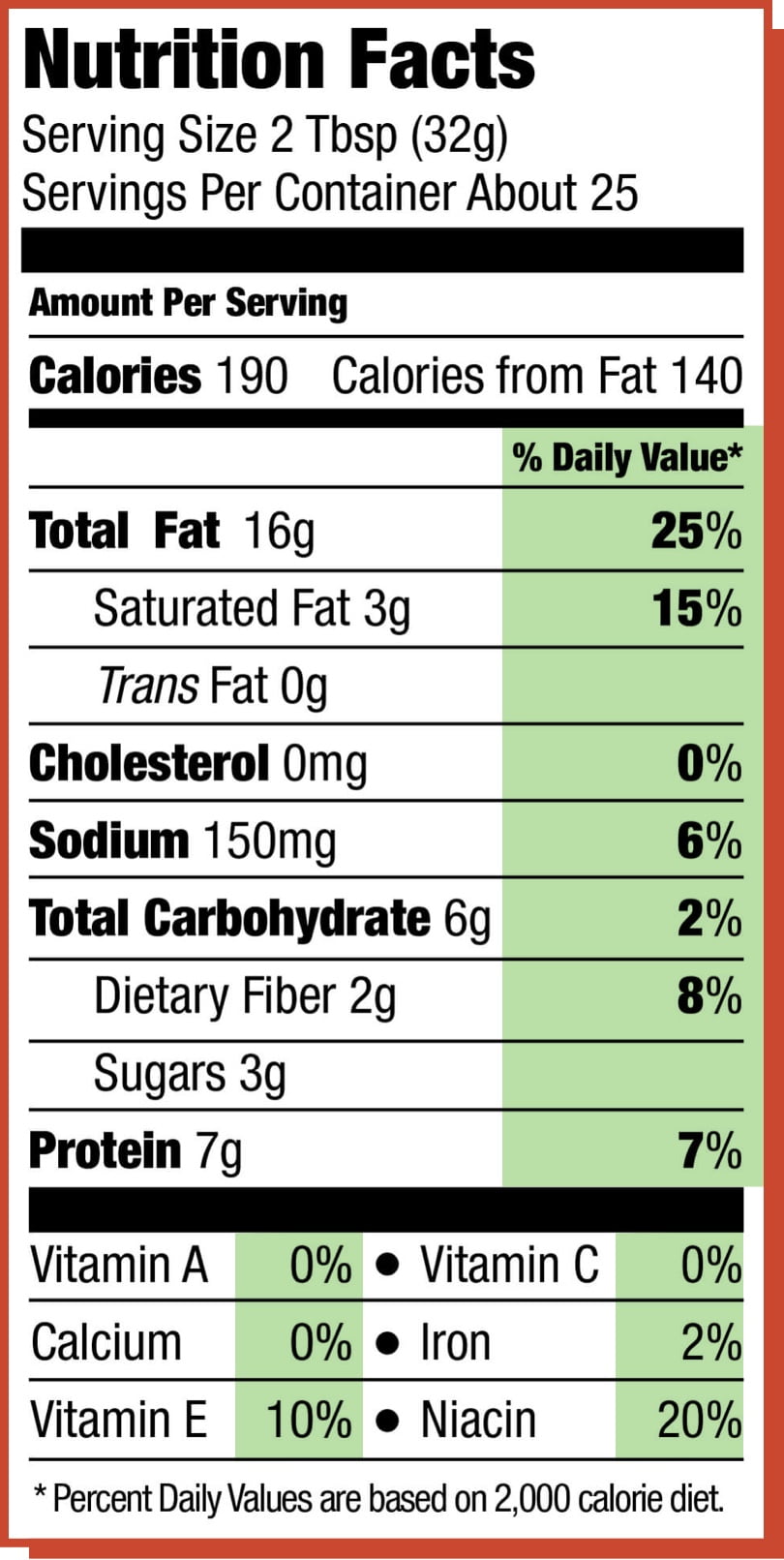
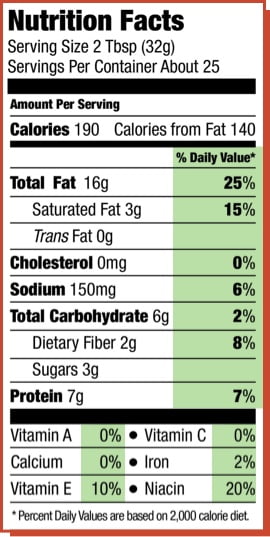
4. Daily values
A Daily Value (DV) is the recommended amount of a nutrient to consume or not to exceed in a day. The DV for each nutrient is expressed as a percentage on a nutrition label, known as % Daily Value (%DV). The %DV indicates how much a nutrient will contribute to a full day’s diet within a serving of food. When you take a look at our example, most nutrients reference a %DV amount. You can consume a quarter of the recommended daily fat intake in just one serving of peanut butter. If you find you are still hungry and opt for a second serving, your Vitamin E intake will reach 20% of the recommended DV.
It’s important to note that DV and %DV are based on a 2,000 calorie diet. Keep this in mind when reading labels as individuals have diverse dietary requirements. The needs of a child versus an adult will be different as our energy and nutrient requirements fluctuate as we age. Working with a healthcare team is one of the best ways to determine what suits the individual best.

Decoding dietary fats!
- Saturated fat: Associated with adverse health effects, saturated fat is often referred to as a “bad fat”. Over consumption can lead to increased cholesterol and risk of heart disease. Foods high in saturated fat include butter, bacon, and coconut oil.
- Trans fat: Just like saturated fat, trans fat also has a bad rap—and for a good reason. There are no known health benefits in trans fat and it’s linked with increased risk of coronary heart disease. Consumption should be as low as possible and limited to less than 1% of total caloric intake. It is often found in commercial baked goods, potato chips, and candy bars.
- Unsaturated fat: Unsaturated fats are commonly known as “good fats”. Found in fish, nuts, and vegetable oils, unsaturated fats lowers ‘bad’ cholesterol, which can decrease risk of heart disease. It’s recommended that the majority of an individual’s fat intake be from unsaturated fat.
- Total fat: Total fat represents how much fat is in one serving of food. It is a sum of each type of fat (saturated, trans, and unsaturated), which is why it’s important to look beyond just the total fat value to understand what fats you may consume.
Beyond the nutrition facts table

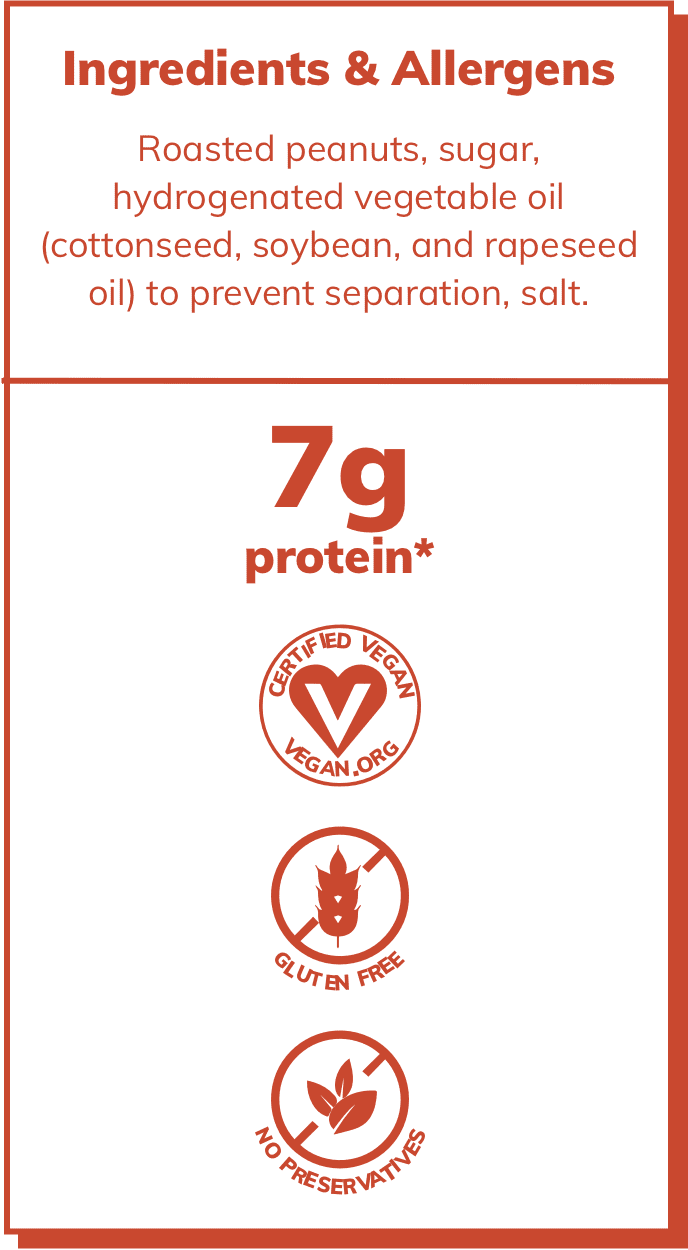
- Ingredients: Ingredients are listed starting with the ingredient that weighs the most and ending with the ingredient that weighs the least. Sometimes different names for commonly used ingredients will be used interchangeably, like sugar. Some other names for sugar commonly found in ingredient lists are: dextrose, fructose, galactose, glucose, lactose, maltose, and sucrose. If you refer to our example, peanuts are the most dominant ingredient, with salt being the least.
- Allergens: Many foods can cause an allergic reaction, with the following 8 foods known as the major food allergens: milk, eggs, fish, shellfish, tree nuts, peanuts, wheat, and soybeans. Food labels are required to identify all major allergens in the food, which is met when the common name of an ingredient listed already indicates the food source of the major allergen (ie: peanuts). If this isn’t clear, the allergen either must be called out in parentheses following the name of the ingredient (ie: “hydrogenated vegetable oil (soybean oil)”) or following the list of ingredients (ie: ”Contains Soy”). If you are restricted from eating something due to an allergy, intolerance or lifestyle practice, make sure to be diligent when checking the food label for your specific allergen(s).
- Marketing claims: Packaged foods will sometimes include nutrition claims, which draws attention to specific nutrients, foods, or ingredients. The two types of nutrition claims are nutrient content claims and health claims. Nutrient content claims describe the amount of a nutrient in the product, using language like free, high, low, more, reduced, and light. Health claims communicate the possible health benefits from consuming the product. These claims can be useful when trying to identify products that fit into your individualized diet. Labelling foods with claims like “gluten-free”, “halal”, and “free-range”, can be especially helpful for people with specific dietary preferences or restrictions.
Just watch out for claims that don't need support to be used. For instance, there are no regulated requirements needed to be met in order to to use the word "natural" on a food package, so that claim shouldn't carry any weight when you're shopping for groceries. On the flip side, if something is labeled "organic”, it means the food met the required checks to make that claim.
What about food without a label?
There are a number of instances when a food will not have a label. Single-ingredient items (like produce and raw meat), prepared food and drink at a local cafe, and some restaurants may not display nutrition facts upfront. The USDA’s Food Search is a great resource to quickly search the nutrition facts of single-ingredient foods. Additionally, you can always ask your server or call the manufacturer for help obtaining the nutrition information and allergens. Some restaurants have this information online or in a booklet that can be provided on request.
